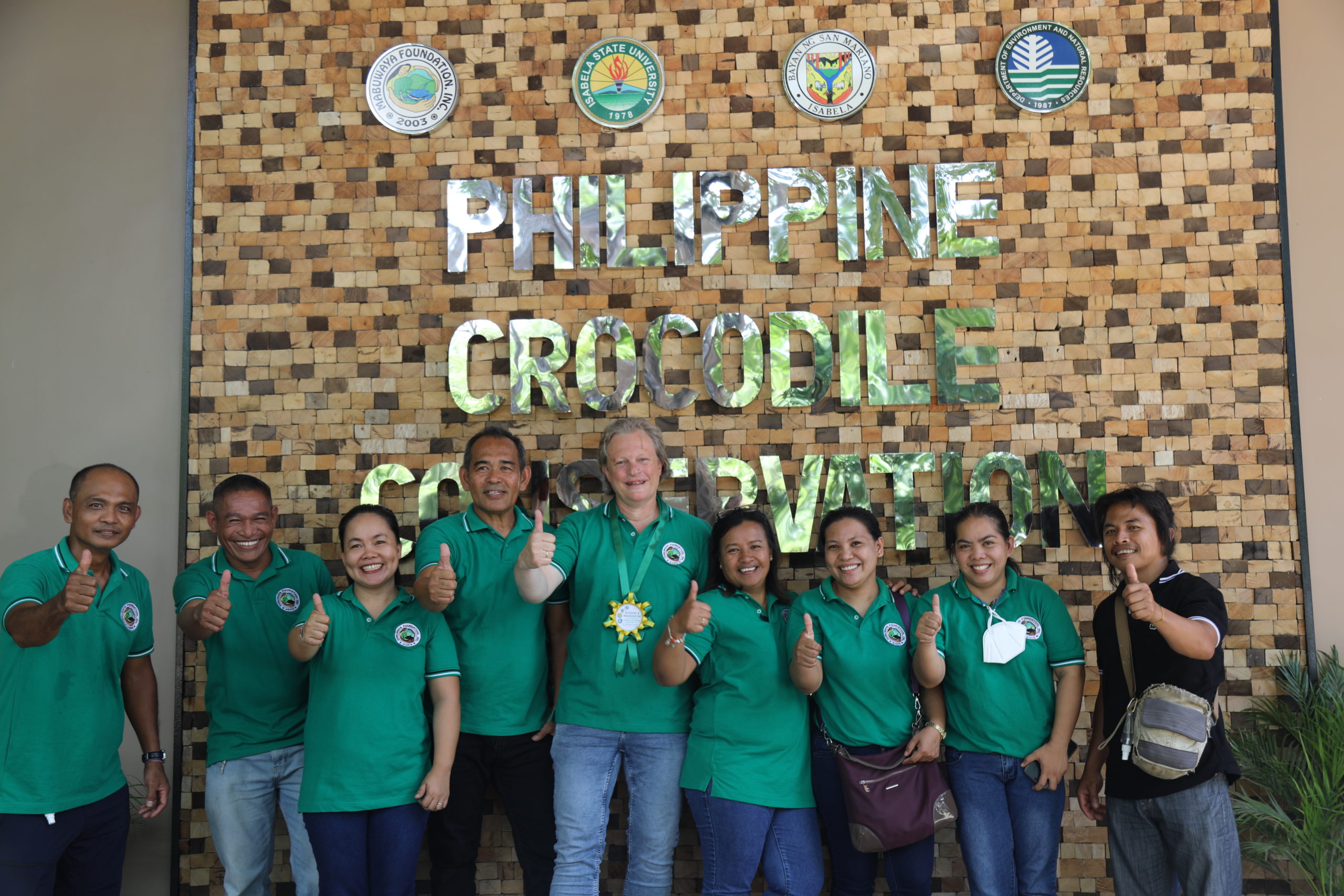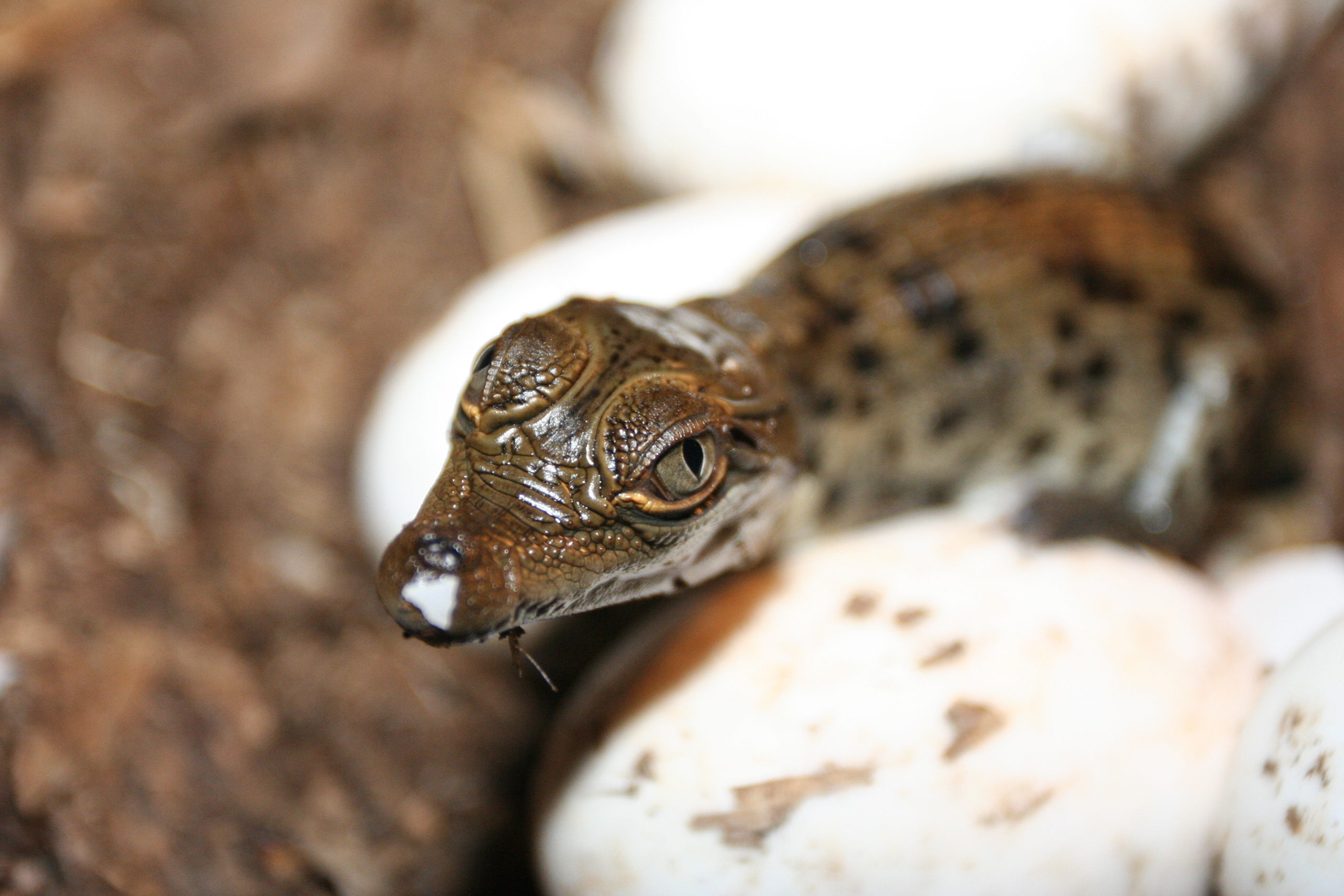The Philippine crocodile has not always been feared, but these days hunting and killing has led numbers to dwindle. The crocodile is now the rarest in the world and a focus of a dedicated conservation programme by Mabuwaya Foundation.
To celebrate World Crocodile Day on June 17th, we invited ASAP Partner Mabuwaya Foundation to share with us the importance of conserving Philppine Crocodiles. Led by Marites Gatan-Balbas, also known as Tess, Mabuwaya Foundation works with local communities to conserve the remnant wild populations of the Philippine Crocodile and its habitat. ASAP is proud to have supported this work through the ASAP Species Conservation Grant. You can read about the project here.
Hear from Mabuwaya Foundation on what they do to protect this species from the brink of extinction.

Why is it important to conserve Philippine Crocodile?
The Philippine crocodile (Crocodylus mindorensis) is the rarest crocodile in the world with less than 100 mature individuals in the wild. It is endemic to the Philippines with only two viable wild sub-populations: in Southwest Mindanao and in the municipality of San Mariano in Isabela Province in Northeast Luzon where we work.

Philippine Crocodile habitat credit: Mvan Weerd
It is classified as Critically Endangered on the IUCN Red List of Threatened Species. The Philippine crocodile has a very bad image in the Philippines. It is regarded as pest and threat to livestock and humans, even though Philippine crocodiles are too small to be man-eaters. They are even associated with corrupt politicians. Habitat loss, hunting and killing out of fear are the main reasons why the population of this species is very small. The Philippine crocodile however was not always hated. Indigenous communities revered, and sometimes still do, this species as a protector of forest spirits or even as their ancestors or twins. Philippine folklore has lots of stories about mythical crocodiles, often portraying the species in a positive way. The general message of many of these stories is: if you don’t harm the crocodile, the crocodile will not harm you.
The Philippine crocodile is as much part of the natural and cultural heritage of the Philippines as the Philippine agle or the Philippine tarsier. It is the key predator in wetland ecosystems and an indicator of healthy natural river systems. The Philippine crocodile is nationally protected by virtue of the Republic Act 9147 or the Wildlife Resources Conservation and Protection Act of 2001. Enforcement of this law is however very weak, and crocodiles remain severely threatened in the Philippines.
What does Mabuwaya do to conserve the Philippine Crocodile?
We use a community-based conservation approach to save the species from extinction. We work with communities to identify high conservation value areas and help to protect them by declaring them as Locally Conserved Areas. Billboards are provided in these LCA’s containing the rules and regulations in the sanctuaries. There are now 8 crocodile sanctuaries in San Mariano protecting key habitat and nesting areas of the Philippine crocodile.

Mabuwaya Crocodile Mascot during outreach campaigns credit: Mvan Weerd
Mabuwaya Foundation does a lot of communication, education and public awareness campaigns. We work with the local universities in designing our information materials. We provide posters and calendars with information to communities and offices. We give lectures to elementary and high school students and organise field trips to college students to see Philippine crocodiles in the wild. The team also develop puppet shows and a mascot, Krokey, to perform and interact with the children during school visits.
Mabuwaya Foundation also provides biodiversity conservation training and workshops to science teachers with the objective that conservation will be integrated in the school subjects. Our other activities include organizing a Crocodile Festival with the Local Government and Department of Education, which is attended by a wide range of people within and outside the municipality. Most people in San Mariano are now aware of the Philippine crocodile’s threatened status and support its conservation, based on frequent interview surveys.
 Monitoring activities carried out credit: Bernard Tarun
Monitoring activities carried out credit: Bernard Tarun
Apart from outreach programmes, we train our community volunteers/sanctuary guards in Philippine crocodile monitoring activities and environmental law enforcement. They become our partners in the field. Together with our community volunteers, we assist the recovery of the population of the Philippine crocodile by searching and protecting nests.
Hatchlings are collected and raised in captivity for 2 years (headstart program). This raises their chance of survival from 5 % to 75%. After 2 years, they are released back into the wild, often by community members and school children.
We help the communities and local government units to develop sanctuary conservation and management plans. These plans are adopted by the local government units and are incorporated in the Forest Land Use Plans or in the Comprehensive Land Use Plans of the municipality.
What are some of the challenges you face in your efforts to conserve the species?
Suitable habitat is scarce and unfortunately crocodiles are still being killed, including adults. The number of nests in the wild is still very low. The maximum we had was 5 (in 2022). Sometimes nests are being destroyed by water buffaloes stepping on them, or predated by monitor lizards, dogs or people. Also, in the events of typhoons and floods, crocodiles are being washed away and are killed downstream where human population density is high and where information campaigns have not reached people to raise support for crocodile conservation.
What are your hopes on the future of Philippine Crocodile?
We are developing a Philippine Crocodile Conservation Center on the campus of Isabela State University in San Mariano. This center is the base of our headstart program. In the future it will also host a captive breeding program forLuzon-origin crocodiles, increasing the number of crocodiles to be released in the wild. The center also will be a visitor center with information about the Philippine crocodile and the unique biodiversity of the Northern Sierra Madre Mountains of Northeast Luzon. Apart from the chance to see the rarest crocodile in the World, an eco-trail in the surrounding natural forest and agroforestry area will provide a learning experience to visitors about native trees and birds of the area and more sustainable ways to conduct agriculture.
 Philippine Crocodile hatchling credit: Mvan Weerd
Philippine Crocodile hatchling credit: Mvan Weerd
Hopefully, through the headstart program, strong communication, public engagement, and the protection and restoration of the remaining suitable habitat, there will be more wild crocodiles and nests in the wild. We hope to seet he Philippine crocodile eventually be downlisted from its Critically Endangered status, with a stable and secure population


Thank ASAP for the funding opportunities to the Mabuwaya Foundation. We are committed to protect the rarest crocodile in the world together with our partners especially the communities who lives in nearby crocodile sanctuaries. Thank you very much for the support.